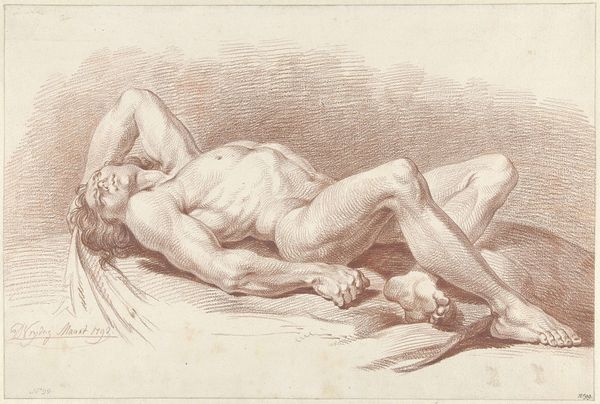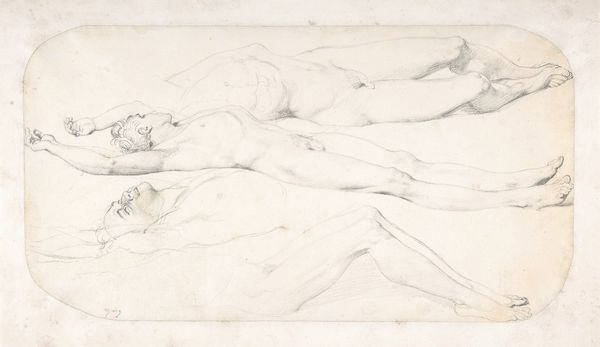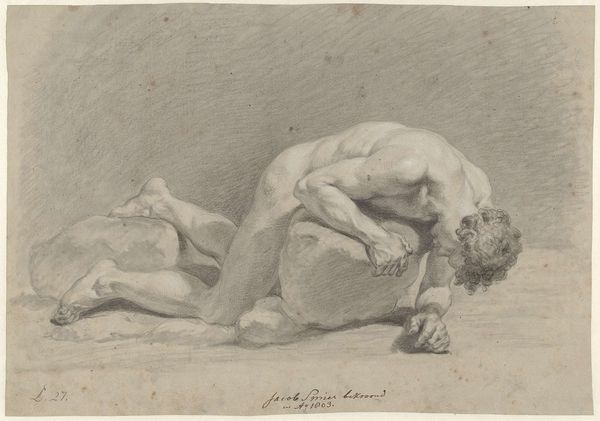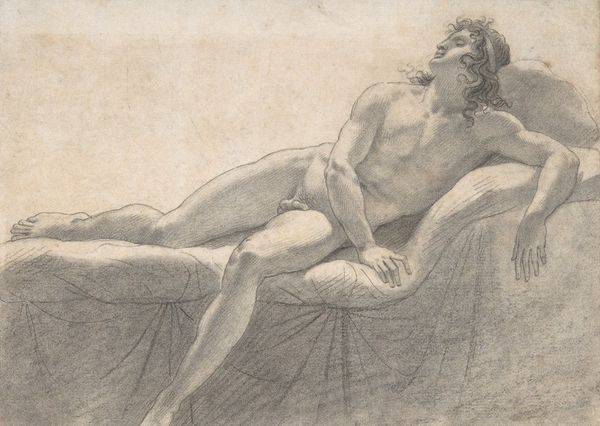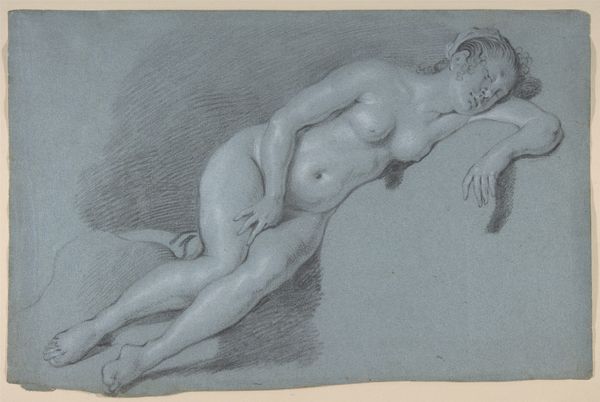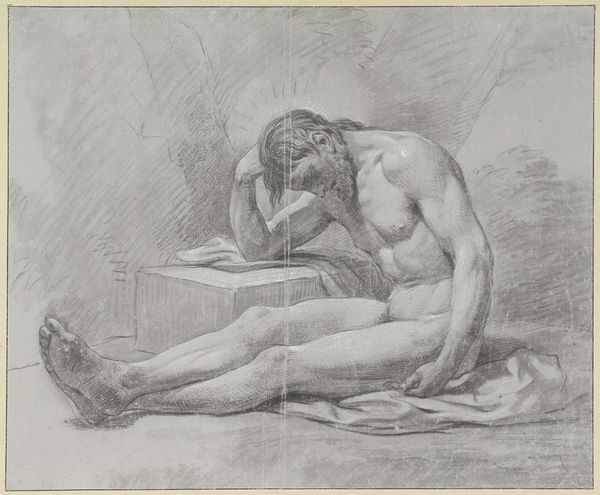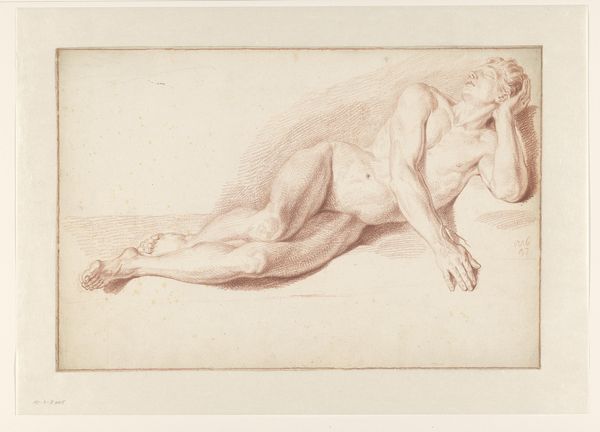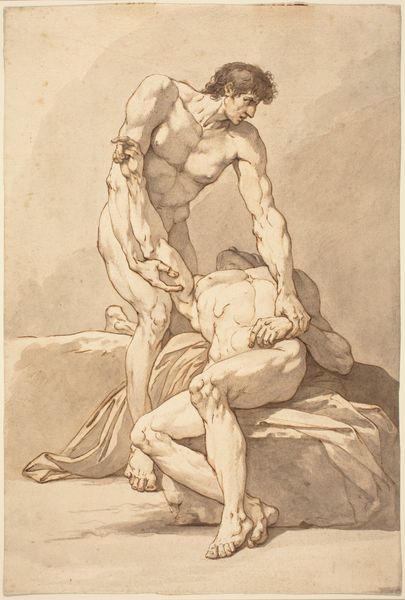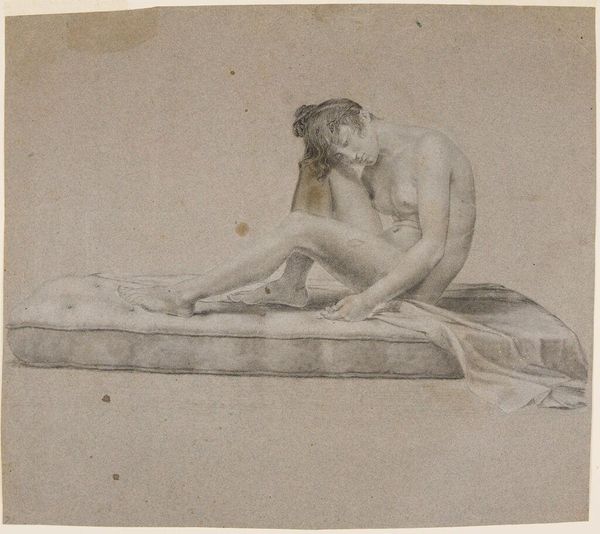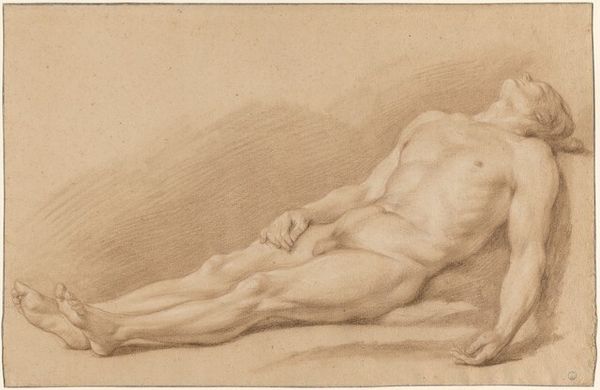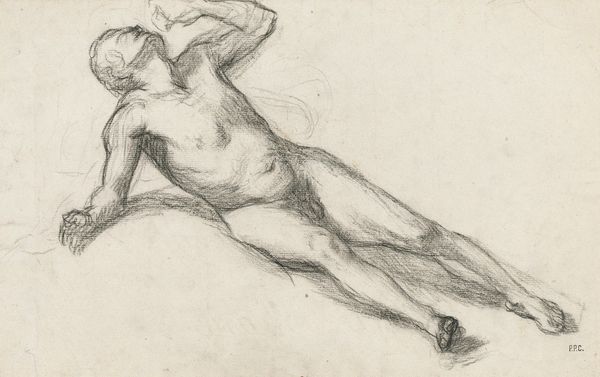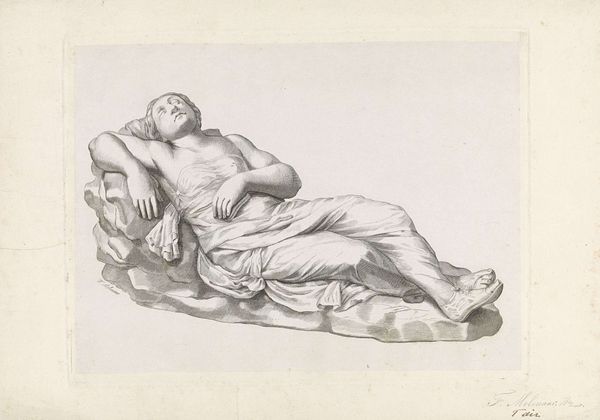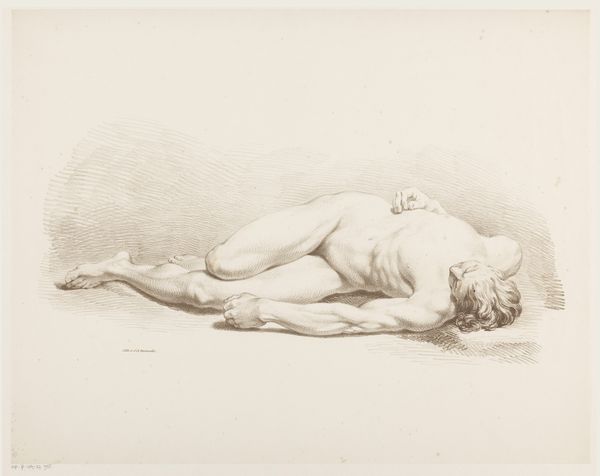
Dimensions: support: 235 x 343 mm
Copyright: NaN
Curator: A visceral image, isn't it? The figure’s constrained pose and the rough shading evoke such feelings of entrapment. Editor: Indeed. This is George Richmond’s “Fettered Nude Figure Reclining by a Rock.” Richmond, born in 1809, was part of a group of artists called The Ancients, who admired William Blake and sought spiritual depth in their art. Curator: The chiaroscuro is striking. The harsh contrast between light and shadow really emphasizes the musculature and the tension in the figure's body. The fetters at the ankles, though small, are so significant to understanding its emotional weight. Editor: Absolutely, and this study speaks to the socio-political climate of the time, the constraints placed on individuals, and the broader theme of human struggle. Richmond was deeply concerned with social justice. Curator: So, in terms of formal execution, Richmond's use of wash emphasizes the stark reality of the figure. Editor: The way it renders the subject in a state of confinement, while simultaneously evoking the spiritual quest… a somber but powerful piece.
Comments
tate 8 months ago
⋮
http://www.tate.org.uk/art/artworks/richmond-fettered-nude-figure-reclining-by-a-rock-a00838
Join the conversation
Join millions of artists and users on Artera today and experience the ultimate creative platform.
tate 8 months ago
⋮
Although Richmond at one time described this drawing as by Blake, stylistically it is unlike his work. Richmond's attribution, probably made when he was an old man, therefore seems to be wrong. It is probably by Richmond himself. Blake's influence is most apparent in the choice of subject. The chained figure of a man recalls the figure of Orc in Blake's drawing 'Los and Orc' which once belonged to Richmond's friend John Linnell. It is now in the Tate collection. This drawing must date from about the time of Richmond's first meeting with Blake, at Linnell's house, in 1825. Richmond later said that conversing with Blake was like 'talking to the Prophet Isaiah'. Gallery label, September 2004
